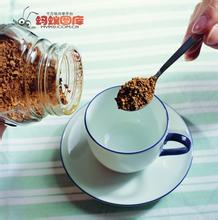Introduction to the flavor and taste characteristics of Ethiopian coffee manor with soft acidity
There are mainly mountain plateaus in Ethiopia, and the central and western regions are the main part of the plateau, accounting for 2% of the total. The East African Rift Valley runs through the whole territory, with an average elevation of nearly 3000 meters, which is known as the "roof of Africa". The terrain around the plateau is gradually declining. The Darol depression in the north fell to 113 meters below sea level, the lowest point in the country. The coast of the Red Sea is a narrow banded plain. Deserts and semi-deserts in the north, south and north-east account for about 25% of the country's area. The Dashan peak of the Ximen Mountains is 4623 meters above sea level, which is the highest peak in Ethiopia. [6]
Climate
Due to the large difference between latitude span and altitude, Ethiopia is located in the tropics, but the temperature is uneven in different places. The heavy rainy season is from June to September, the dry season is from October to January, and the light rainy season is from February to May. Due to uneven rainfall in different seasons and regions, local drought is easy to occur. The temperature ranges from 9.7 ℃ to 25.5 ℃. The average annual temperature is 16 ℃. [5]
Hydrology
There are many rivers and lakes in the territory, where the Blue Nile originates, but the utilization rate is less than 5%. [1]
Natural resources editor
Proven deposits include gold, platinum, nickel, copper, iron, coal, tantalum, silicon, potash, phosphate, marble, limestone, oil and natural gas. Companies from Malaysia, Saudi Arabia, Britain, Sudan, Jordan and other countries have carried out oil and gas exploration and development in Ethiopia. Rich in water resources, known as the "East African water tower". [1]
Population editor
As of 2012, Ethiopia has a population of 91 million, making it the second most populous country in Africa. The population growth rate is 2.9%. [7]
There are more than 80 ethnic groups in the country, mainly Oromo (40%), Amhara (20%), Tiger (8%), Somalia (6%), Sidamo (4%) and so on. 45% of the residents believe in the Ethiopian Orthodox Church, 40-45% believe in Islam, 5% believe in Protestantism, and the rest believe in primitive religions.
By 2012, the three most populous states were Oromo, Amhara and Southern State.
The coffee producing areas of Ethiopia are Sidamo, Harald and Sidamo, Harrar and Yirgacheffe. Sidamo and Harrar are provinces and divisions, Sidamo is located in the south of Ethiopia bordering Kenya, and Harrar is bordering Somalia in the east of Ethiopia. Although Yirgacheffe is a community in the Sidamo region, its coffee is considered to be the best in Ethiopia because of soil composition and water content.
In the West, Ethiopian coffee is generally labeled and (Yirgacheffee, Sidamo and Harrar) sold on the market.
In the field of boutique coffee, there are also five other small places of coffee, namely Lim, Gemma, Le Campdi, Becca and Limmu, Djimmah, Lekempti, Bebeka and Wolega. The most common is Essesidamo or Harald coffee (Either Sidamo or Harrar coffee).
Harald Coffee (HarrarCoffee) comes from the eastern highlands of Ethiopia, with medium bean size, green yellow, medium acidity, full alcohol thickness and typical mocha flavor (mochaflavor). It is one of the most famous coffee in the world.
Wollega (Nekempte) coffee comes from the west of Ethiopia, with medium to large beans and is famous for its fruity flavor. The color is green and brown (greenish,brownish color), and the acidity and alcohol thickness are good. Can be made to match, can also be individual products.
Limu Coffee coffee is famous for its aroma and wine taste (spicy and Winnie flavor) and is very popular in Europe and the United States. The acidity and alcohol thickness are good, and the water-washed lim coffee is also the favorite of fine coffee. The bean shape is medium, greenish blue, mostly round.
Sidamo coffee (SidamaCoffee) has medium bean shape and green gray. Hidamo washed coffee is known as sweet coffee (sweet coffee) because of its balanced taste and flavor. it has delicate acidity and good alcohol thickness. it is produced in the south of Ethiopia and can be mixed with fine products.
YirgacheffeCoffee coffee has a strong floral flavor.
Water washing is one of the best high-estate coffee in the world, with soft acidity and rich alcohol thickness. Top and Bebeka coffee, with low acidity but high alcohol thickness, are indispensable members of the blended coffee.

Important Notice :
前街咖啡 FrontStreet Coffee has moved to new addredd:
FrontStreet Coffee Address: 315,Donghua East Road,GuangZhou
Tel:020 38364473
- Prev

Aromatic and delicious Nicaragua coffee plantation producing area flavor taste characteristics boutique coffee introduction Tianyizhuang
In 1961, after the establishment of the Sandro Liberation Front, it led the guerrilla struggle. In 1979, the guerrilla group was renamed the Sandinista People's Army. In February 1995, the Sandinista People's Army was renamed the Nicaragua National Army. the constitution stipulates that the armed forces must obey the civilian government and the president is the supreme commander of the armed forces. the commander in chief of the armed forces is nominated by the military council.
- Next

Introduction to the characteristics of Coffee Flavor Manor in Sidamo Chiso producing area of Ethiopia
(1) Ethiopian people's Revolutionary Democratic Front (The Ethiopian Peoples Revolutionary Democratic Front,EPRDF): EGF, the ruling party. Founded in 1989 with the Tigre people's Liberation Front (PLF) as the core, the member parties include the Amhara National Democratic Movement, the Oromo people's Democratic Organization and the people's Democracy of Southern Ethiopia
Related
- Does Rose Summer choose Blue, Green or Red? Detailed explanation of Rose Summer Coffee plots and Classification in Panamanian Jade Manor
- What is the difference between the origin, producing area, processing plant, cooperative and manor of coffee beans?
- How fine does the espresso powder fit? how to grind the espresso?
- Sca coffee roasting degree color card coffee roasting degree 8 roasting color values what do you mean?
- The practice of lattes: how to make lattes at home
- Introduction to Indonesian Fine Coffee beans-- Java Coffee producing area of Indonesian Arabica Coffee
- How much will the flavor of light and medium roasted rose summer be expressed? What baking level is rose summer suitable for?
- Introduction to the characteristics of washing, sun-drying or wet-planing coffee commonly used in Mantenin, Indonesia
- Price characteristics of Arabica Coffee Bean Starbucks introduction to Manning Coffee Bean Taste producing area Variety Manor
- What is the authentic Yega flavor? What are the flavor characteristics of the really excellent Yejasuffi coffee beans?

